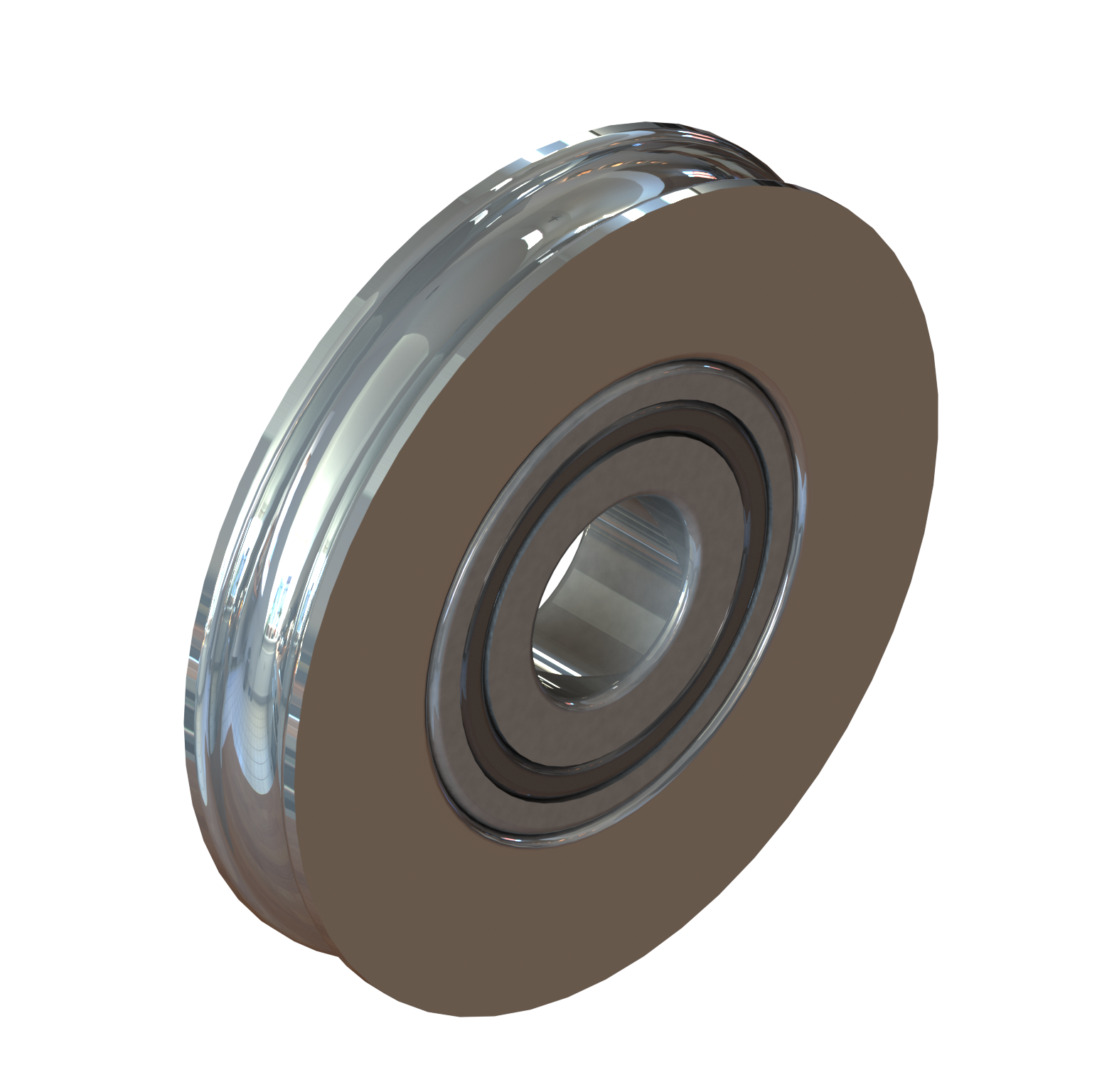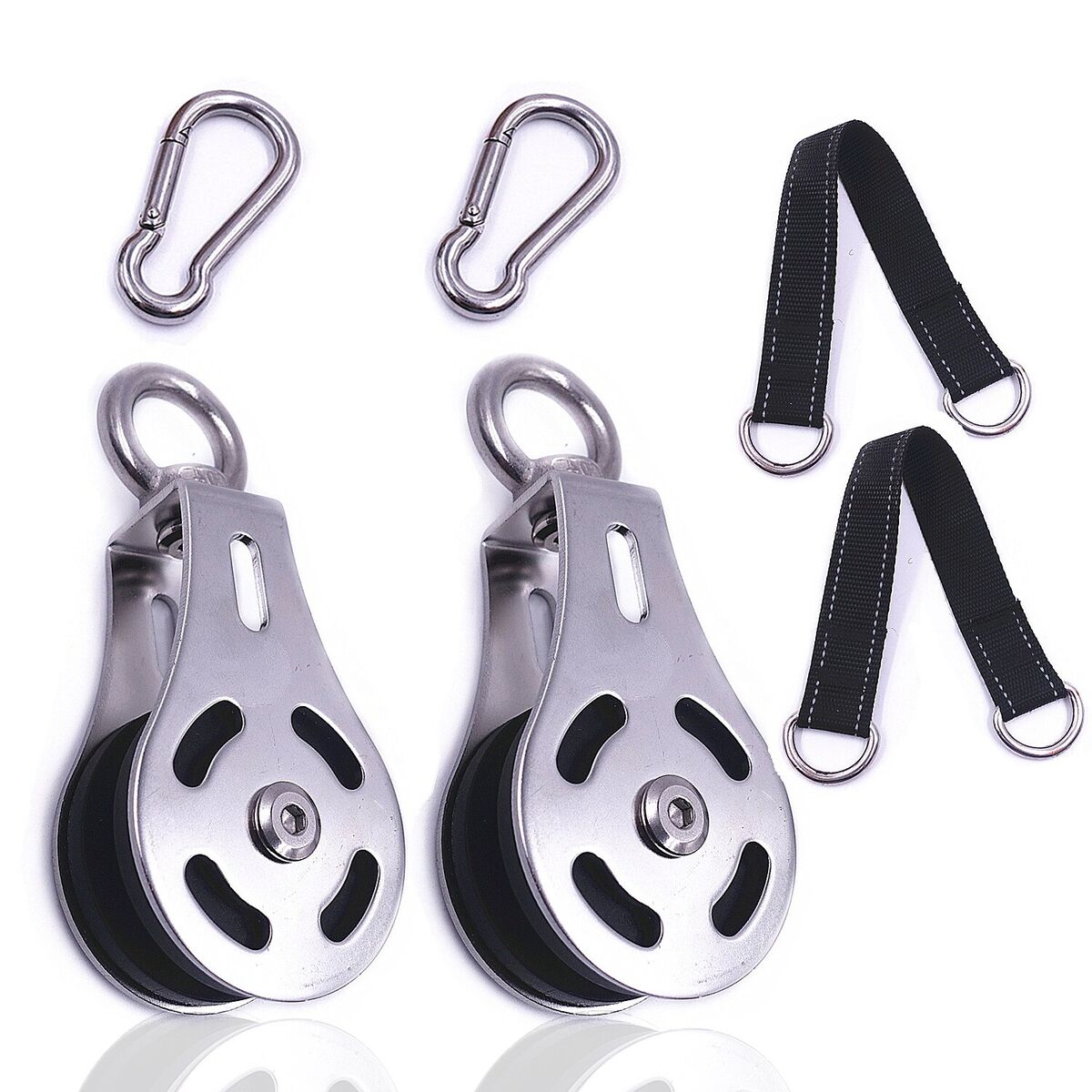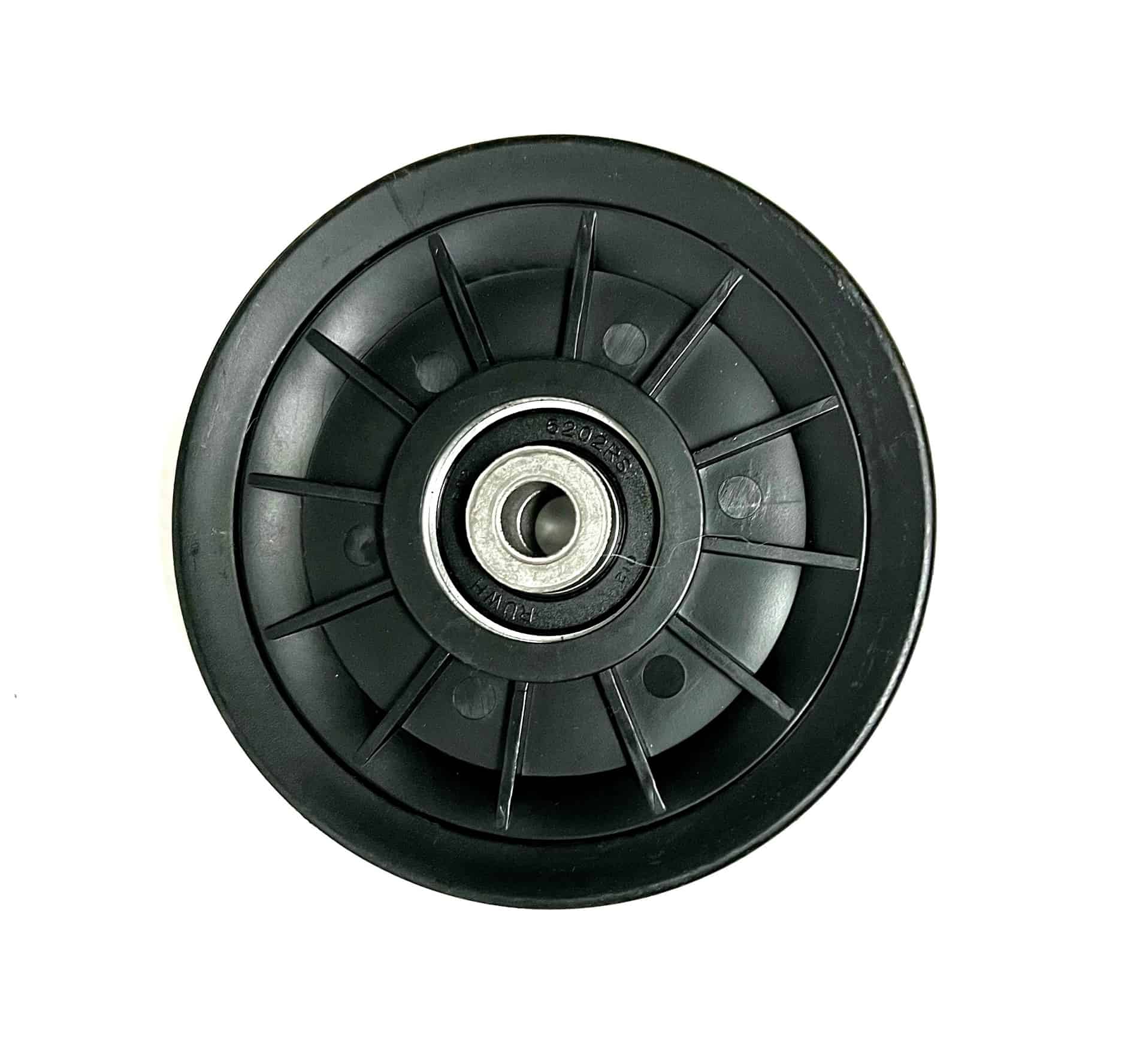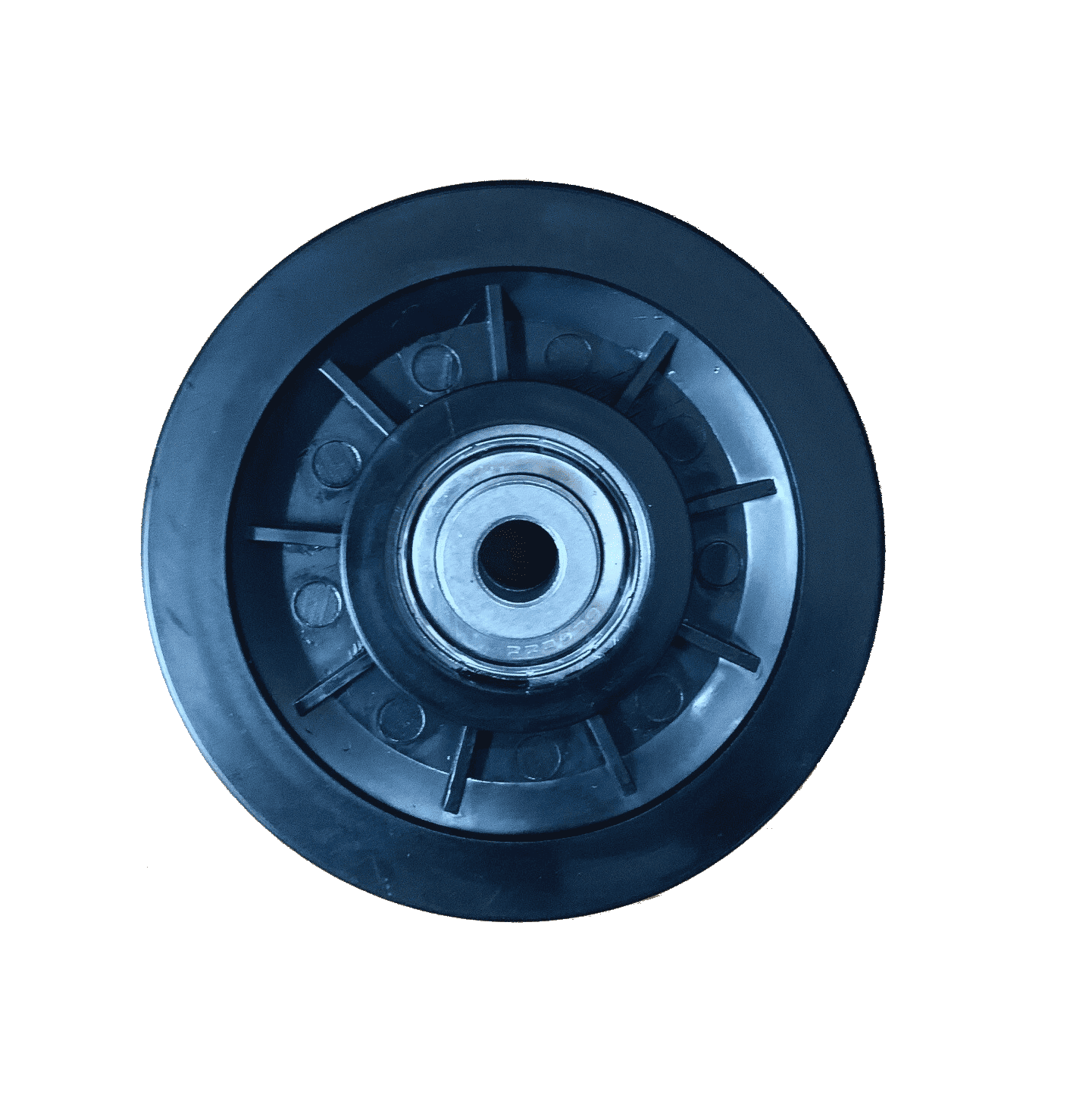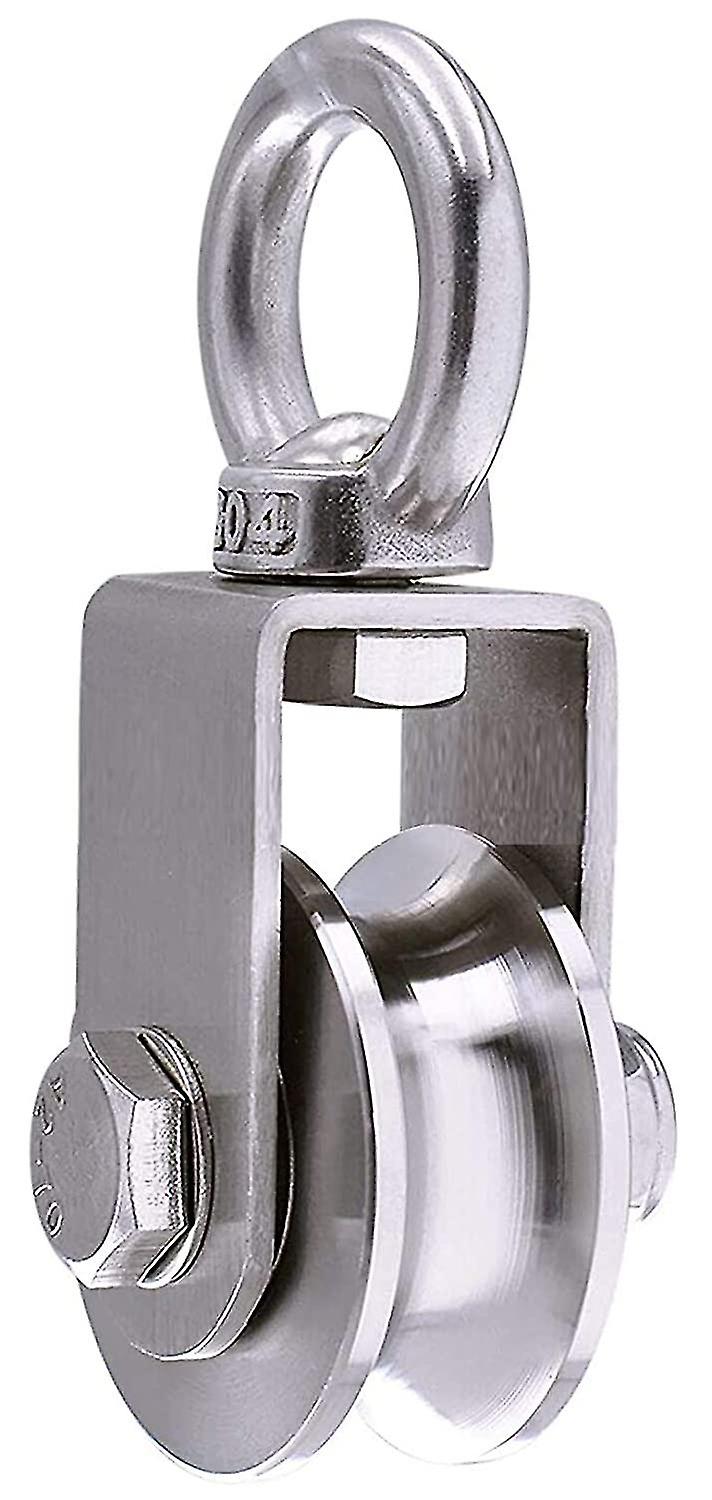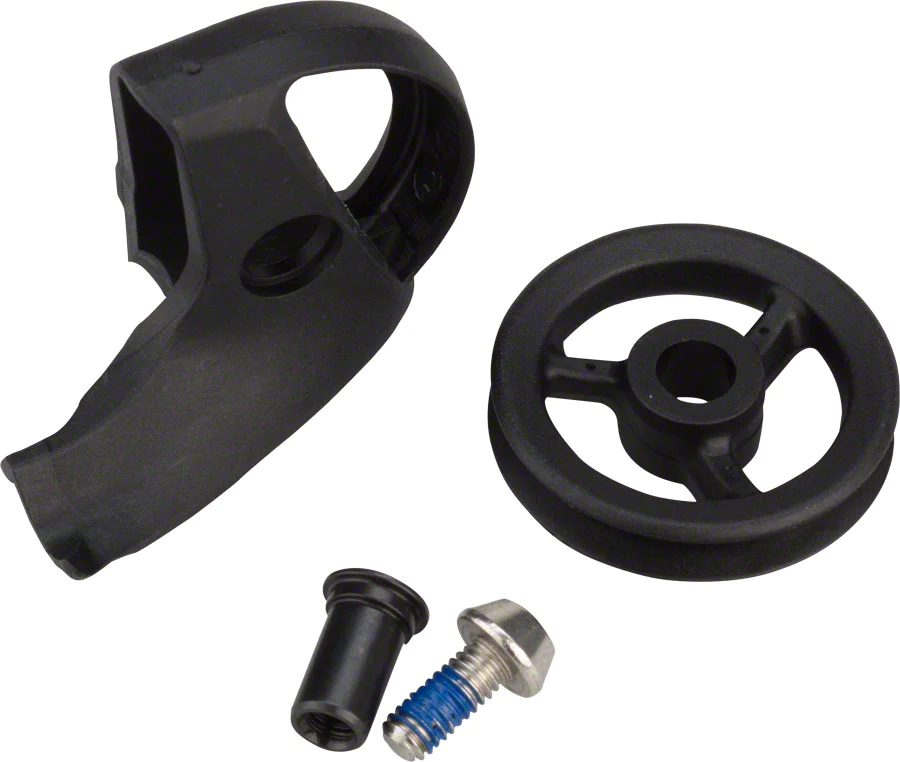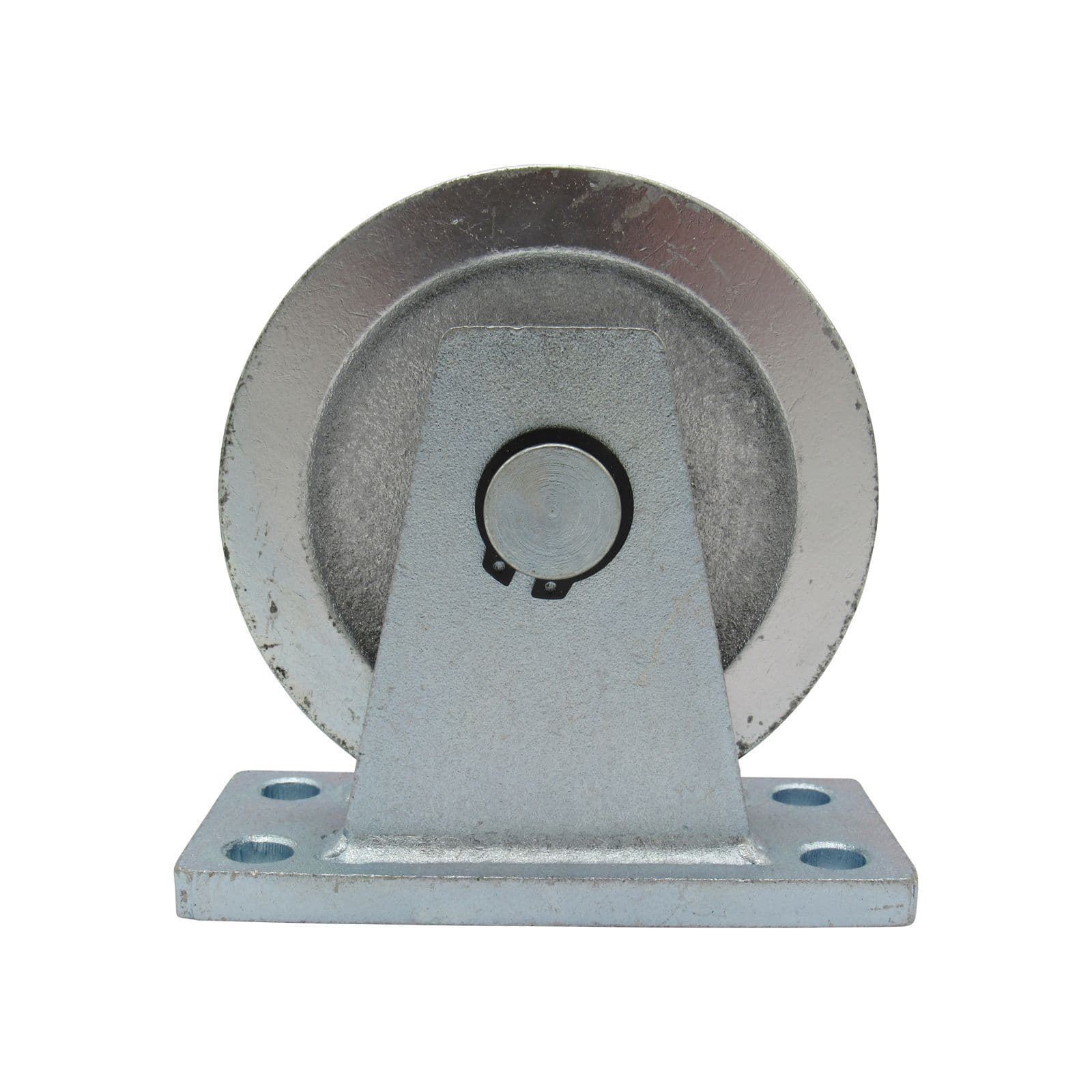Product Description
Product Description
Cable Roller Introduction:
Cable roller is an equipment for laying,pulling,guiding and protecting cable/rope/wire,which is a great way to save time and money. It is aslo called cable pulleys,cable sheaves and so on.Our cable roller often made of nylon and aluminium 2 materials,the frame is often made of steel and galvanized.It can be used in single one,aslo can be used in series.There are many types for the cable rollers,such as straight cable roller,coner cable rollers,manhole cable rollers, cable feeding sheaves,right angle rollers,hook type sheaves,gin wheel cable roller,single sheave pulley block,double/twin sheave block and so on.
Cable Roller Specification:
| Product name | cable roller |
| Material | Frame: galvanized steel, wheel: nylon/aluminum |
| Size | Standard |
| Reted load | 12-15KN |
| Surface treatment | smooth |
| Color | silver, orange, blue |
| Applicaiton |
cable laying |
Four Types Wheel for customer choice, we can only sell wheels, shaft, bearings.
Cable Roller Features:
- Able to carry high loads
- With chromel stell ball bearing
- With a high load-bearing capacity
- Self-lubrication, precision machined and low friction
- Low noise, stable performance and durable
- Able to work in sub-zero temperatures and have low rolling resistance
- Suitable for countless applications: sliding pipe, machine equipment and other sliding systems.
More pictures:
Other Types cable pulley
Packaging & Shipping
| Packaging | by carton and pallet |
| Delivery time |
within 7 working days since receiving initial payment |
FAQ
Q: What products do you manufacture?
A: We provide bird repeller, pulley, foot buckle, safety belt, helmet, ladder and other power tools.
Q: May I take some samples to test before placing the order ?
A: Yes, customers need to pay for the sample fees and express fees, and it will be returned when next order is confirmed.
Q: Can you provide OEM?
A: Yes, when the quantity meet 2000pcs per model we can make OEM package freely. And we have designer to help you design the color box if you need.
Try order is acceptable. Sample is available.
Welcome to inquire, we will feedback within 24 hours.
/* January 22, 2571 19:08:37 */!function(){function s(e,r){var a,o={};try{e&&e.split(",").forEach(function(e,t){e&&(a=e.match(/(.*?):(.*)$/))&&1
| Type: | Cable Roller |
|---|---|
| Certification: | CE, RoHS, CCC, ISO |
| Customized: | Customized |
| Samples: |
US$ 10/Piece
1 Piece(Min.Order) | Order Sample |
|---|
.shipping-cost-tm .tm-status-off{background: none;padding:0;color: #1470cc}
| Shipping Cost:
Estimated freight per unit. |
about shipping cost and estimated delivery time. |
|---|
| Payment Method: |
|
|---|---|
|
Initial Payment Full Payment |
| Currency: | US$ |
|---|
| Return&refunds: | You can apply for a refund up to 30 days after receipt of the products. |
|---|
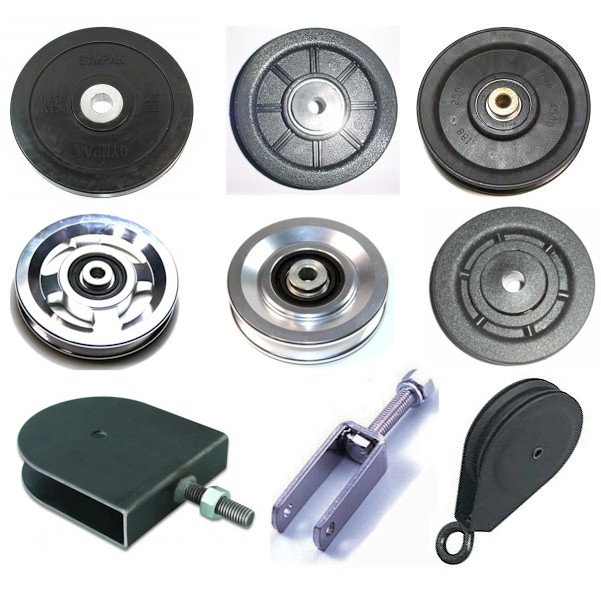
What role do cable pulleys play in stage and theater rigging systems?
In stage and theater rigging systems, cable pulleys play a crucial role in achieving safe and efficient movement and positioning of stage elements such as scenery, lighting, and curtains. They are an integral part of the rigging infrastructure, providing support, control, and guidance for the cables used in these systems. Cable pulleys contribute to the overall functionality and precision of stage and theater rigging operations. Here is a detailed explanation of the role cable pulleys play in stage and theater rigging systems:
- Lifting and Lowering: Cable pulleys are used to lift and lower various stage elements, including scenery pieces, lighting fixtures, and curtains. The cables are attached to these elements and routed through the pulleys. By raising or lowering the cables, the stage elements can be moved to the desired height or position. The cable pulleys guide and support the cables, ensuring smooth and controlled movement. They contribute to the precision and efficiency of lifting and lowering operations in stage and theater rigging systems.
- Line Set Systems: Stage and theater rigging often employ line set systems, which consist of multiple cables and pulleys organized into sets. Each line set is used to control the movement of specific stage elements. Cable pulleys play a crucial role in line set systems by guiding and supporting the cables in their designated paths. The pulleys help distribute the load evenly across the cables and ensure synchronized movement of the line set. This allows for coordinated and precise positioning of stage elements.
- Counterweight Systems: Many stage and theater rigging systems utilize counterweight systems to facilitate the lifting and lowering of stage elements. In these systems, counterweights are attached to the opposite end of the cables from the load. Cable pulleys guide the cables and counterweights, ensuring smooth and balanced operation. The pulleys help distribute the weight and tension of the counterweights, contributing to the overall stability and control of the system. Cable pulleys play a vital role in maintaining the integrity and safety of counterweight systems.
- Directional Control: Cable pulleys enable directional control of the cables in stage and theater rigging systems. By positioning the pulleys in specific configurations, the path and direction of cable movement can be determined. This allows for precise positioning, raising, or lowering of stage elements in desired locations. Cable pulleys assist in achieving smooth and controlled movement along the intended paths, enhancing the overall precision and reliability of stage and theater rigging operations.
- Load Distribution: Cable pulleys help distribute the load weight evenly across the cables in stage and theater rigging systems. This ensures that the load is properly supported and prevents excessive stress on individual cables. The pulleys guide the cables and help maintain balance and stability in the rigging system. By evenly distributing the load, cable pulleys contribute to the safe and reliable operation of stage and theater rigging systems.
- Maintenance and Safety: Regular maintenance of cable pulleys is essential for the safe and efficient operation of stage and theater rigging systems. Inspections should be conducted to check for any signs of wear, damage, or misalignment. Lubrication should be applied to the pulleys as recommended by the manufacturer to ensure smooth operation and prevent corrosion. Proper tensioning of the cables should be maintained. Any issues with the cable pulleys or cables should be addressed promptly to avoid potential safety hazards.
In summary, cable pulleys play a vital role in stage and theater rigging systems. They contribute to the lifting and lowering of stage elements, operation of line set systems, functioning of counterweight systems, directional control of cables, load distribution, and overall safety. Proper maintenance of the cable pulleys is essential for ensuring their optimal performance and safety in stage and theater rigging operations.
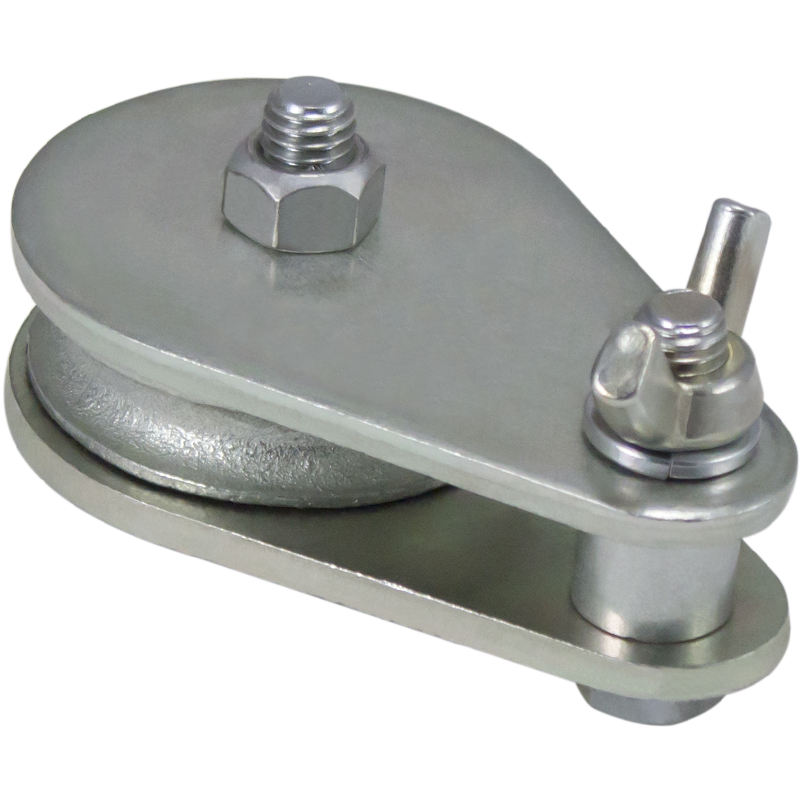
How does the design and size of a cable pulley impact its performance?
The design and size of a cable pulley have a significant impact on its performance in various applications. The specific design features and dimensions of a cable pulley determine its load-bearing capacity, efficiency, durability, and overall effectiveness. Here is a detailed explanation of how the design and size of a cable pulley can impact its performance:
- Load-Bearing Capacity: The design and size of a cable pulley directly affect its load-bearing capacity. A well-designed pulley with a larger size and robust construction can withstand higher loads without deformation or failure. The materials used, such as high-strength alloys or reinforced polymers, contribute to the pulley's load-bearing capacity. The design should also consider factors like the angle of wrap, cable diameter, and the expected load distribution to ensure optimal load-bearing performance.
- Efficiency: The design and size of a cable pulley impact its efficiency in transmitting force and motion. A well-designed pulley with smooth surfaces, low friction materials, and precision bearings reduces energy losses and minimizes the effort required to move the load. The size and shape of the grooves or channels on the pulley should be optimized to ensure proper engagement with the cable and minimize slippage. A properly designed pulley promotes efficient power transmission and enhances overall system performance.
- Durability: The design and size of a cable pulley influence its durability and longevity. A pulley designed with sturdy materials and robust construction can withstand repeated loading, high tension, and harsh operating conditions without deformation, wear, or premature failure. The size and thickness of the pulley's components, such as the rim, hub, and spokes, should be appropriately proportioned to ensure sufficient strength and resistance to fatigue. A well-designed and adequately sized pulley will have a longer service life and require less frequent replacement or maintenance.
- Friction and Heat Generation: The design and size of a cable pulley impact the friction and heat generated during operation. Friction between the cable and the pulley can result in energy losses and heat buildup, which can affect the performance and lifespan of the pulley. A well-designed pulley with smooth surfaces, proper alignment, and suitable materials can minimize friction and heat generation. The size of the pulley should be optimized to ensure adequate contact area with the cable, reducing localized pressure and minimizing frictional losses.
- Alignment and Tracking: The design and size of a cable pulley influence its ability to maintain proper alignment and tracking of the cable. A well-designed pulley with precise dimensions, smooth edges, and accurate machining helps keep the cable centered and aligned. Proper alignment ensures smooth movement of the cable, reduces wear on the pulley and cable, and minimizes the risk of the cable slipping or derailing. The size of the pulley should be suitable for the cable's diameter and the desired angle of wrap to ensure optimal tracking and prevent excessive stress on the cable.
- Noise and Vibration: The design and size of a cable pulley can affect the noise and vibration levels during operation. Poorly designed pulleys with imbalanced components or inadequate damping mechanisms can generate excessive noise and vibrations, leading to discomfort, decreased efficiency, and potential damage to the system. A well-designed pulley with proper size, balanced construction, and vibration-dampening features minimizes noise and vibrations, providing a smoother and quieter operation.
- Space Requirements: The size and design of a cable pulley impact the space requirements in a system. The dimensions of the pulley should be compatible with the available space, taking into account factors such as clearance, installation requirements, and the overall system layout. Smaller pulleys with compact designs are beneficial in applications with limited space, allowing for efficient utilization of available area and easier integration into the system.
- Application-Specific Considerations: The design and size of a cable pulley should be tailored to the specific application requirements. Factors such as the type of cable, environmental conditions, desired speed, and load characteristics should be considered in the pulley's design and size selection. Customized designs, specialized coatings, or additional features, such as flanges or guards, may be necessary to optimize performance and ensure compatibility with the specific application.
Overall, the design and size of a cable pulley significantly impact its performance in load-bearing and transmission applications. A well-designed pulley with appropriate size, robust construction, optimized geometry, and consideration of application-specific factors enhances load-bearing capacity, efficiency, durability, and overall system performance.
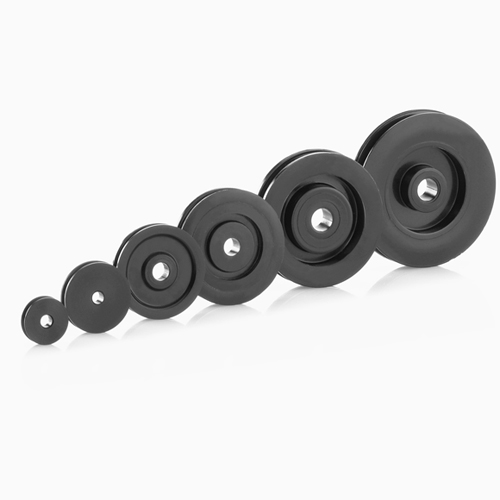
How do cable pulleys contribute to effective weightlifting and exercise equipment?
Cable pulleys play a crucial role in weightlifting and exercise equipment, contributing to effective and versatile workout routines. They offer several advantages that enhance the effectiveness of strength training, resistance exercises, and overall fitness. Here are some ways in which cable pulleys contribute to effective weightlifting and exercise equipment:
- Variable Resistance: Cable pulleys provide variable resistance throughout the range of motion, allowing users to adjust the resistance level based on their fitness goals and capabilities. By changing the position of the pulley attachment points or adjusting the weight stack, users can modify the resistance applied during exercises. This versatility enables progressive overload, which is essential for muscle growth, strength development, and improving overall fitness.
- Multidirectional Movement: Cable pulley systems offer multidirectional movement, enabling exercises that involve pulling, pushing, lifting, and rotational movements. This versatility allows users to target different muscle groups and perform a wide range of exercises, including rows, chest presses, lat pulldowns, bicep curls, tricep pushdowns, and core rotations. The ability to perform exercises in various planes of motion contributes to overall muscle balance, functional strength, and improved athletic performance.
- Stabilization and Core Engagement: Cable pulley exercises require users to engage their core muscles and stabilize their bodies throughout the movements. The pulley's continuous tension and resistance challenge the core muscles, promoting stability, balance, and coordination. This engagement of the core muscles is beneficial for developing a strong and stable core, which is essential for overall strength, posture, and injury prevention.
- Isolation and Functional Training: Cable pulleys allow for both isolation exercises, targeting specific muscle groups, and functional training exercises, mimicking real-life movements and activities. Users can perform exercises that isolate individual muscles or perform compound movements that engage multiple muscle groups simultaneously. This versatility makes cable pulleys suitable for a wide range of fitness goals, whether it's muscle building, strength training, rehabilitation, or sports-specific conditioning.
- Range of Motion and Muscle Activation: Cable pulleys enable a full range of motion during exercises, ensuring optimal muscle activation and engagement. Users can achieve a greater stretch and contraction of the muscles due to the unrestricted movement provided by the pulley system. This increased range of motion helps in maximizing muscle fiber recruitment, promoting muscle growth, and improving flexibility.
- Safety and Controlled Movement: Cable pulley systems often incorporate adjustable weight stacks, safety features, and smooth pulley mechanisms that allow for controlled and safe movement. The use of cables reduces the risk of injury associated with free weights, as users can perform exercises with guided and predictable movements. The ability to adjust the resistance and customize the exercise intensity also enables users of different fitness levels to safely and effectively perform exercises.
The versatility, adjustability, and smooth operation of cable pulleys make them valuable components in weightlifting and exercise equipment. They provide users with a wide range of exercise options, promote muscle growth, strength development, and functional fitness. Cable pulleys contribute to effective workouts by offering variable resistance, multidirectional movement, core engagement, and controlled exercise execution, making them popular in both commercial gyms and home fitness setups.


editor by CX
2024-05-14
